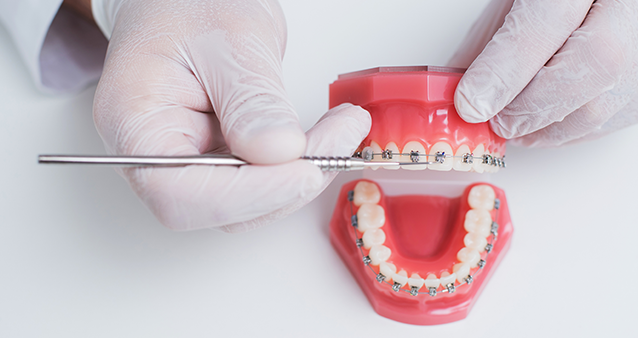Does Medical Aid Cover Braces?

Many parents of teens or tweens know the true price of crooked teeth. But before you 'brace' yourself to break the bank, let's take a look at which orthodontic treatments your Medical Aid plan covers.
Yes, most Medical Aids do cover part, or all, of the costs related to orthodontic treatments like braces if you're on a comprehensive plan, but to varying degrees. That's why it's so important to read through your plan's policy to establish exactly what's included, and always consider dental limits and exclusions before making tracks to your preferred orthodontist.
The importance of having dental cover
While convincing certain family members to visit the dentist can be like pulling teeth – ahem – annual dental check-ups are a must. But even routine dental procedures have become an increasingly costly exercise. Add to that the cost of orthodontics when you or your kids are seeking the perfect smile (or scowl!) you're in for some hefty fees. It pays to get to grips with what dental and orthodontic cover your Medical Aid plan offers.
Types of Medical Aid and their dental offerings
"There are two main Medical Aid product structure types," explains Alexia Graham, Director of Hippo Advisory Services. These are:
-
Savings account products:
This involves out-of-hospital expenses being funded from a savings account. Basically, it's the money you've given the medical scheme to cover expenses. The more expensive savings account products offer a benefit (threshold) that kicks in once savings are depleted and the member has further funded a self-payment gap to get to this threshold benefit. In this product type, specialised dentistry is paid for from your own savings. If your accumulated claims reach the threshold level, you may have an additional benefit once above the threshold limit. -
Traditional Medical Aid products:
This is where defined annual limits are offered for every medical expense category. The defined limit in these products for specialised dentistry (if any) is usually quite limited and often not enough to cover a years' worth of orthodontic treatment.
"In product type one, you are effectively paying for the cost of the treatment from the savings account and in product type two, you have a limited defined benefit amount," says Graham. "Both types are expensive and often not good value for money."
Also read: The difference between a Medical Aid and a Hospital Plan
The reality of orthodontic cover
Few of us can finance the cost of orthodontic braces and the associated regular check-ups, which generally amount to tens of thousands of rands. It's therefore vital to investigate Medical Aid orthodontic inclusions and exclusions, especially as our children enter puberty and seriously cannot spend another minute with that overbite.
"Coverage depends on your specific plan," says Candice Kagan, a financial planner at Brofin, who advises clients on Discovery Health Medical Aid plans. The higher your premium, the more orthodontics you'll be covered for.
"Generally, the overall structure on Discovery Health is that it will pay for orthodontics from your available medical savings," she explains. "If you're in a self-payment gap, you'll have to self-fund the orthodontics, and then once you're above the threshold, it will cover the orthodontics up to the stipulated scheme rate and within the overall stipulated benefit limits."
Braces exclusions
Depending on your plan, a co-payment may be required. You'll also have to prove that the braces are not cosmetic but medically necessary because the function of the teeth, jaw or mouth is impaired. "Medical Aids are so restrictive on providing benefits for specialised dentistry due to the elective nature of the treatment and the high costs involved," Graham explains.
In some plans, only braces from designated service providers (DSPs) or network orthodontists will be covered. If you have family coverage, only one family member can start orthodontic treatment during a calendar year — with the exception of twins.
Getting your orthodontic cover straight
Examine the dental cover your plan offers and see what orthodontic treatment it includes for adults — if you're ready to take your own teeth on the straight and narrow — and for under-18s. You may need to take out specialised or extra dental coverage or choose a plan with higher medical savings if you know that your family's heavy metal needs have nothing to do with music.
Yet, Graham argues that Medical Aid should not be chosen based on the specialised dentistry benefit alone. "The average cost for a single person is approximately R4,500 per month," she says. "However, it's more common for a member, spouse and at least one child to look for these products if they want specialised dentistry. The average Medical Aid premium for that type of product is approximately R9,000 per month — expensive cover for a limited benefit."
Also read: What is Gap Cover and how does it work?
If in doubt, consult a Medical Aid broker who can outline the orthodontics cover of each plan you're considering. Then use Hippo.co.za's free online Medical Aid quotes comparison tool to get the best value for money.
This article is for informational purposes only and should not be construed as financial, legal or medical advice.
Hippo Blog Categories





































